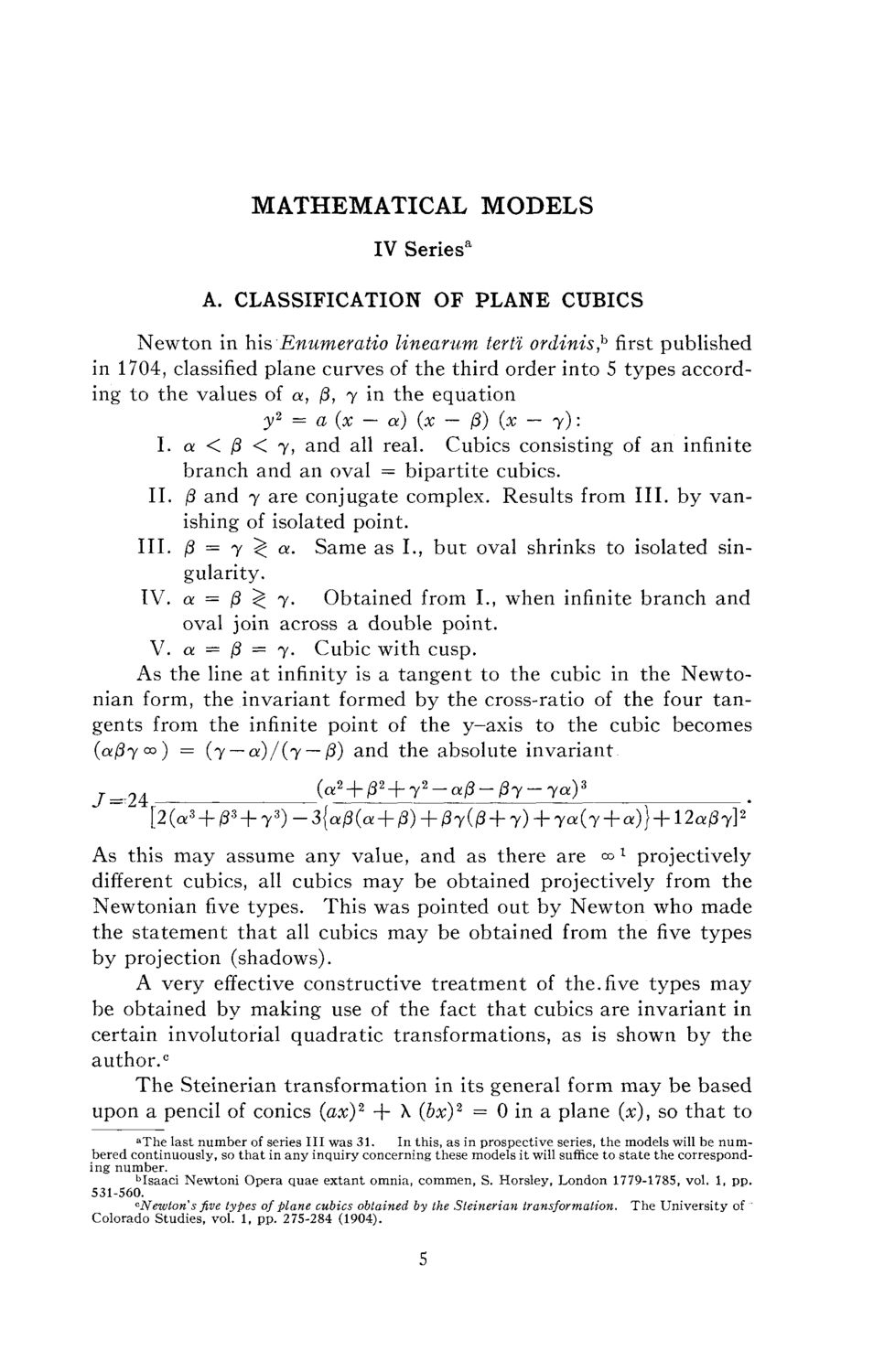| |
| |
Caption: Mathematical Models by Arnold Emch - Series 4 (1928)
This is a reduced-resolution page image for fast online browsing.

EXTRACTED TEXT FROM PAGE:
MATHEMATICAL IV Seriesa MODELS A. CLASSIFICATION OF PLANE CUBICS Newton in his Enumeratio linearum terti ordinis,h first published in 1704, classified plane curves of the third order into 5 types according to the values of a,fi,y in the equation y2 = a (x — a) (x — /3) (x — y): I. a < 0 < 7, and all real. Cubics consisting of an infinite branch and an oval = bipartite cubics. II. P and 7 are conjugate complex. Results from III. by vanishing of isolated point. III. ( = y t a. Same as I., but oval shrinks to isolated sin3 * gularity. IV. a = / ^ y. Obtained from I., when infinite branch and 3 oval join across a double point. V. a = P = y. Cubic with cusp. As the line at infinity is a tangent to the cubic in the Newtonian form, the invariant formed by the cross-ratio of the four tangents from the infinite point of the y-axis to the cubic becomes (a(3yco) = (y — a)/(y — ^) ancl the absolute invariant. j =M (a2 + /32 + 72-<*/3-/37-7<*)3 [2(a3 + 03 + 73)-3{a/3(a + /3) + /3T(0 + y) + ya(y + a)} + 12a(3y}* As this m a y assume any value, and as there are °° x projectively different cubics, all cubics m a y be obtained projectively from the Newtonianfivetypes. This was pointed out by Newton who made the statement that all cubics m a y be obtained from thefivetypes by projection (shadows). A very effective constructive treatment of the.five types m a y be obtained by making use of the fact that cubics are invariant in certain involutorial quadratic transformations, as is shown by the author.0 The Steinerian transformation in its general form m a y be based upon a pencil of conies (ax)2 + X (bx)2 = 0 in a plane (x), so that to aThe last number of series III was 31. In this, as in prospective series, the models will be numbered continuously, so that in any inquiry concerning these models it will suffice to state the corresponding number. bIsaaci Newtoni Opera quae extant omnia, commen, S. Horsley, London 1779-1785, vol. 1, pp. 531-560. cNewtorisfivetypes of plane cubics obtained by the Steinerian transformation. The University of 5 Colorado Studies, vol. 1, pp. 275-284 (1904).
| |